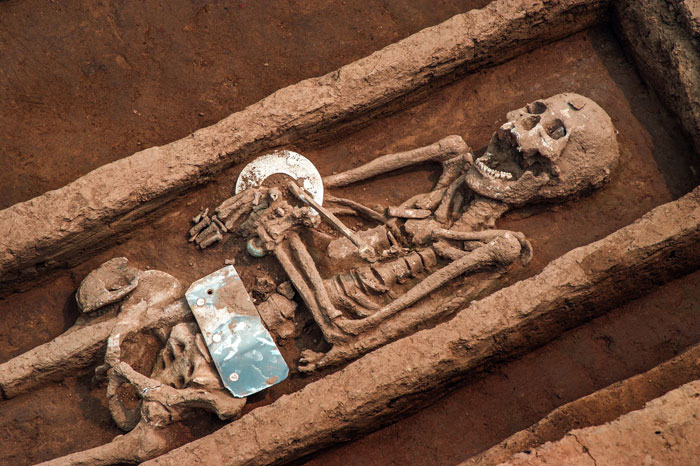Shandong Province, China – An extraordinary archaeological discovery has captivated researchers and the public alike: a graveyard containing the remains of individuals who lived approximately 5000 years ago, some of whom were remarkably tall for their time, has been unearthed in China’s Shandong Province. This finding, which provides a fascinating glimpse into ancient human history, has sparked significant interest and speculation about the people who once inhabited this region.

The site, located in the village of Jiaojia, was discovered by a team of archaeologists from Shandong University. Among the remains, several skeletons measured over six feet in height, a stature considered exceptional given the average height of people during that era. The discovery of these “giants” has led scientists to ponder the genetic and environmental factors that might have contributed to their unusual height.

The excavation revealed a well-preserved settlement dating back to the late Neolithic period, around 3000 BC. In addition to the human remains, the site also included pottery, jade artifacts, and tools, indicating a well-developed society with advanced craftsmanship. The layout of the graves and the artifacts found alongside the skeletons suggest that these individuals held significant social status within their community.
The towering height of these ancient individuals has intrigued scientists, as it contrasts sharply with the physical characteristics of other populations from the same period. Researchers are examining the skeletal remains for clues about their diet, lifestyle, and possible genetic traits that could explain their remarkable stature. Preliminary studies suggest that a diet rich in protein, as well as a stable and prosperous society, may have contributed to their growth and overall health.
Further analysis of the remains will involve DNA testing, which could provide insights into the genetic makeup of these individuals and their relation to contemporary human populations. This research might reveal whether the people of Jiaojia had unique genetic traits or if their height was the result of favorable environmental conditions.
The discovery has also led to a renewed interest in the history and culture of the Longshan people, who are believed to have inhabited the region during this period. The Longshan culture is known for its black pottery, sophisticated agriculture, and social stratification. The findings at Jiaojia offer valuable new information about their burial practices, social structure, and daily life.
Archaeologists are particularly excited about the potential of this site to shed light on the interactions between different cultures in ancient China. The presence of artifacts from various regions suggests that Jiaojia may have been a hub of cultural exchange and trade. This could help historians piece together a more comprehensive picture of the early civilizations in the Yellow River basin, a region often regarded as the cradle of Chinese civilization.
The local government has recognized the significance of this discovery and is taking steps to preserve the site. Plans are underway to establish a museum and research center to study and display the findings. This initiative aims to promote further archaeological research and public interest in the region’s rich historical heritage.
The graveyard of “giants” in Jiaojia is more than just a fascinating archaeological find; it is a window into a distant past, offering clues about the lives of people who walked the earth thousands of years ago. As researchers continue to unravel the mysteries of this ancient society, the world watches with bated breath, eager to learn more about the secrets buried beneath the soil of Shandong Province.
In the coming years, the Jiaojia site is expected to yield even more remarkable discoveries, enriching our understanding of ancient human civilizations and the diverse ways in which they adapted to their environments and interacted with one another.






